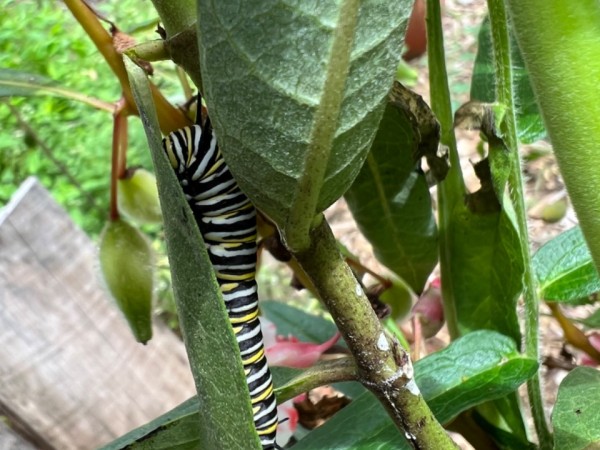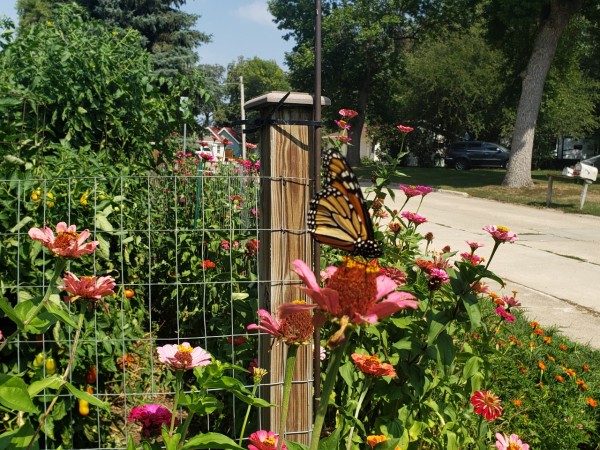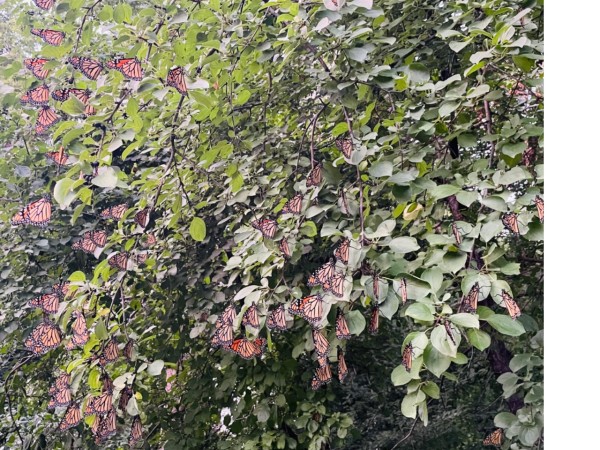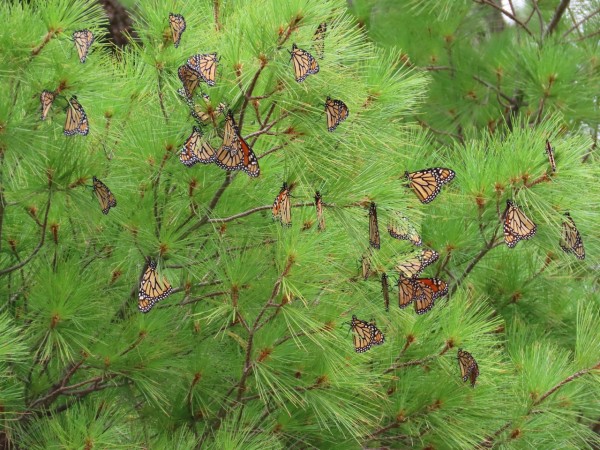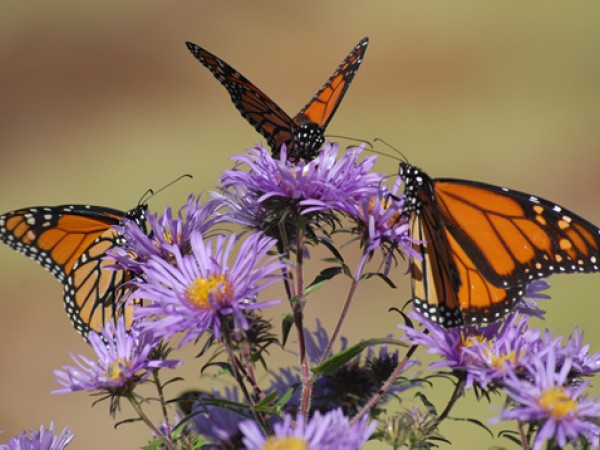Get Ready for an Exciting Fall Migration!
Photo: Bruce in Hartley, IA (08/27/2023)
Journey North volunteers are reporting monarch breeding behavior and many observations of eggs, larvae, and nectaring adults. There have even been several reports of fall roosts since early August, a classic sign of fall migration. Has migration started? Each year is different. Explore our monarch migration maps to compare data year-over-year.
Changes in Migratory Monarchs
Three signs of migratory monarchs include flying in directional flight, nectaring intensely, and clustering in overnight roosts. Migrating monarchs change both physiologically and behaviorally. Declining daylength triggers the monarch’s migratory state. Beginning around mid-August in the north, adults are in diapause when they emerge from the chrysalis. They are full grown but not reproductively mature; their reproductive development is on pause. These monarchs will not complete development and begin to mate until next spring in Mexico. The hormone deficiency that leads to diapause also leads to increased longevity. Breeding monarchs live only 2-6 weeks; migratory monarchs live up to 8 months.
Corey in River Forest, IL: "Laying several eggs today. I would guess about 10. . ." (08/29/2023)
Lexi in Aberdeen, MD: "Spotted one monarch caterpillar amongst my milkweed and starting scanning the patch and they were everywhere!! I saw 9 or 10 but didn’t want to disturb the plants to do a full count. I saw caterpillars on both my butterfly milkweed (Asclepias tuberosa) and my showy milkweed (asclepias speciosa.)" (08/29/2023)
John in Orleans, IA: "Lot's of individual monarchs today on the zinnias .... counted seven (7) at one time .... moving in and out of the garden. Winds calm, temp 78 degrees F, full sun. About 1300 hours." (08/30/2023)
Roost Reporting
Many fall roost reports have been submitted from the Upper Midwestern U.S., particularly in Minnesota. Monarchs rest at overnight roosts at the end of each migration day. Roosts show us where large concentrations of migrating monarchs are found. Week by week, the map will reveal the main migration pathways to Mexico and the pace of migration. Much mystery surrounds roosts as they are difficult to study; they don’t last long and can’t always be found dependably in the same places every year. Take a look at the roost map to see observational reports of roosts submitted thus far this fall.
Roost reports should reflect the number of monarchs observed within a roost for a single night. In your comments, let us know as much of the following information as possible: when the roost formed; nearby nectar sources; overnight temperatures and wind direction; tree species monarchs were roosting on; and how you estimated the number of monarchs. Photos are always welcome and provide a voucher for your observation.
Tessie in Murdock, MN: "This roost started forming 3 days ago. . .There's lots of nectar sources nearby. There's a small grove of trees they are roosting in, but not one particular kind. They seem to be fairly shielded from the wind. . . Been chilly in the mornings (high 50s, low 60s F) and hot in the afternoons (above 85°) with high humidity. . . In the afternoon they are very active flying everywhere, and at 6:30 they start filling the trees, huddling together in large groups." (08/21/2023)
Janet in Hanover, MN: ". . . Large restored prairie had enough rain, heavily blooming goldenrod and liatris (most preferred) 4:30-7 p.m. many roosts forming on the leeward side of trees. The largest roosts were in maple and oak trees in a grove, slightly elevated area abutting the prairie, out of the wind. . . 500 prob. an undercount. . ." (08/26/2023)
Sherry in St. Michael, MN: "Found 100s of Monarchs roosting in 3 White pine trees, later found another 2 or 3 dozen in trees in another part of the Crow-Hassan Park Reserve, near deciduous trees, but not as concentrated as this area. . ." (08/26/2023)
Report Your Observations
When you observe monarchs, we want to know. Report now and continue to do so until you see your last monarchs of the fall migration season. Thank you!





